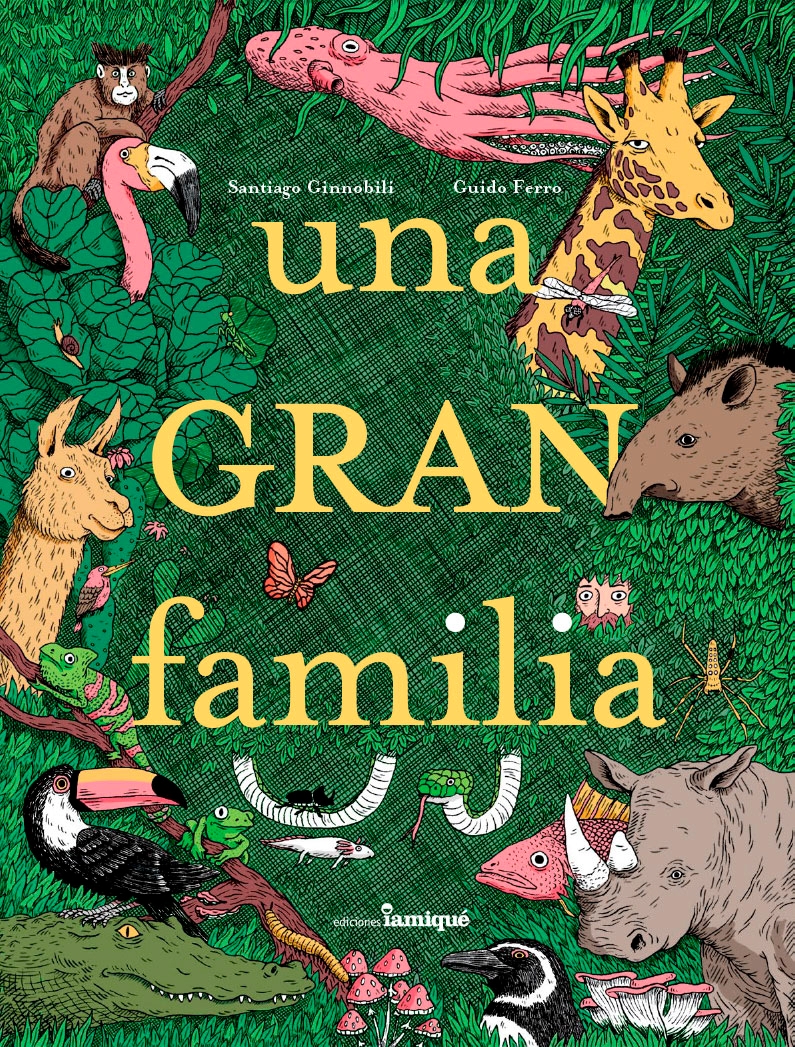A big family: a valuable and original contribution to the approach of children to evolutionary thinking
Main Article Content
Abstract
This text is a review of a book for children on biological evolution by philosopher Santiago Ginnobili entitled "One Big Family". The book in question is based on the figure of the English naturalist Charles Darwin to introduce the idea of evolutionary change and, more specifically, the idea of common ancestry. In relation to the content, some virtues of the text under review stand out, among them the recourse to known phenomena and analogical reasoning, which facilitate the understanding of a scientific idea central to Darwin's work and to current biology that is contrary to common sense. In relation to the style, the clear and attractive character of the text is emphasized, as well as the quality of the illustrations. It is concluded that the book is a good introduction to evolutionary thought for young children, and that its reading could facilitate the later construction of scientific models of evolutionary biology in school.
Translated with www.DeepL.com/Translator (free version)
Downloads
Article Details

This work is licensed under a Creative Commons Attribution-NonCommercial-ShareAlike 4.0 International License.
Aquellos autores/as que tengan publicaciones con esta revista, aceptan los términos siguientes:- Los autores/as conservarán sus derechos de autor y garantizarán a la revista el derecho de primera publicación de su obra, el cuál estará simultáneamente sujeto a la Licencia de reconocimiento de Creative Commons que no se permite un uso comercial de la obra original ni de las posibles obras derivadas, la distribución de las cuales se debe hacer con una licencia igual a la que regula la obra original.
- Los autores/as podrán adoptar otros acuerdos de licencia no exclusiva de distribución de la versión de la obra publicada (p. ej.: depositarla en un archivo telemático institucional o publicarla en un volumen monográfico) siempre que se indique la publicación inicial en esta revista.
- Se recomienda a los autores/as difundir su obra a través de Internet (p. ej.: en archivos telemáticos institucionales o en su página web) después del proceso de publicación, lo cual puede producir intercambios interesantes y aumentar las citas de la obra publicada. (Véase El efecto del acceso abierto).
References
Fernández, I., Gil, D., Carrascosa, J., Cachapuz, A. y Praia, J. (2002). Visiones deformadas de la ciencia transmitidas por la enseñanza. Enseñanza de las Ciencias: Revista de Investigación y Experiencias Didácticas, 20(3), 477-488. doi: 10.5565/rev/ensciencias.3962
Ginnobili, S. (2022). Una gran familia. Buenos Aires: Ediciones Iamiqué.
Hofstadter, D. y Sander, E. (2018). La analogía. Motor del pensamiento. Barcelona: Tusquets.
Kampourakis K. (2014). Understanding evolution. Nueva York: Cambridge University Press.
Noguera Solano, R. (2013). The metaphor of the architect in Darwin: Chance and free will. Zygon, 48(4), 859-874. doi: 10.1111/zygo.12045
Pérez, G., Gómez Galindo, A. y González Galli, L. (2018). Enseñanza de la evolución: fundamentos para el diseño de una propuesta didáctica basada en la modelización y la metacognición sobre los obstáculos epistemológicos. Revista Eureka sobre Enseñanza y Divulgación de las Ciencias 15(2), 2102. doi: 10.25267/Rev_Eureka_ensen_divulg_cienc.2018.v15.i2.2102
Pramling, N. (2008). The role of metaphor in Darwin and the implications for teaching evolution. Science Education, 93(3), 535-547. doi: 10.1002/sce.20319
Rosengren K., Brem S., Evans E. y Sinatra G. (Eds.). (2012). Evolution challenges Integrating research and practice in teaching and learning about evolution. Oxford: Oxford University Press. doi: 10.1093/acprof:oso/9780199730421.001.0001
Ronfard, S., Brown, S., Doncaster, E. y Kelemen, D. (2021). Inhibiting intuition: Scaffolding children's theory construction about species evolution in the face of competing explanations. Cognition, 211, 104635. doi: https://doi.org/10.1016/j.cognition.2021.104635
Sterrett, S. (2002). Darwin’s analogy between artificial and natural selection: How does it go? Studies in History and Philosophy of Biology and Biomedical Sciences, 33(1), 151-168. doi: 10.1016/S1369-8486(01)00039-5

